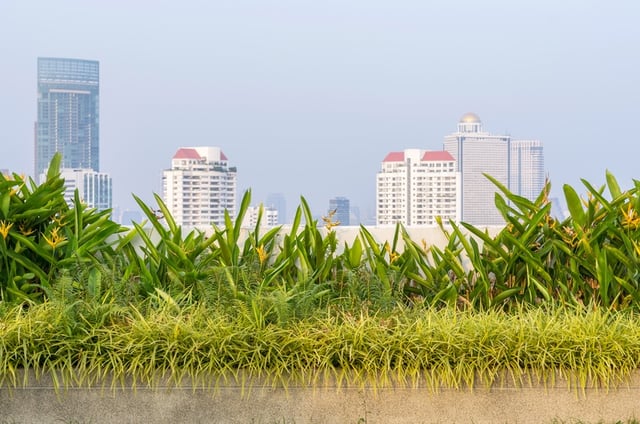Traditional Farming Benefits from Urban Farming
Traditional farming is getting smarter, more advanced, and more efficient when it comes to crop production on America's farmland. The downside to this is that while the hardworking farmer toils in the fields, the urban consumer knows very little about how much work goes into the production of their food. Fortunately, the farm-to-table movement has worked to reduce urban consumers’ detachment from their food and, building on the movement's success, some forward-thinking companies are now bringing not just farm products to the table, but the farm itself.

JetBlue is hoping to bring a little bit of the country to the city and hoping to turn “farm-to-table” into “farm-to-tray-table.” Starting with a 24,000 square-foot space outside Terminal 5 at New York’s JFK Airport, JetBlue in partnership with GrowNYC has begun farming potatoes, chives, basil, carrots, and other plants deemed safe (the crop was specifically selected to avoid attracting birds). Hoping to improve the appearance of the terminal and teach people about farming, JetBlue hopes one day to serve what it grows in its terminal restaurants.
When most people think of green at Fenway Park, the Green Monster is what immediately springs to mind—but Fenway Farm hopes to change that. Just around the corner from the Green Monster in a quiet corner of the old park, milk crates planted with produce are lined up, arranged by crop, and watered with a piping system. The team is excited about turning a previously vacant space into a productive garden and the fan response has been great. Currently the crop ends up in dishes served at the high-end EMC club within the park, but the team believes everyone benefits from lessons about healthy eating and sustainability the garden teaches.
The Ritz Carlton in Charlotte, North Carolina has some unlikely residents—40,000 honey bees live on their environmentally-friendly roof, featuring 18,000 sedum plants and a special chef's garden. Randall York of Charlotte-based Cloister Honey tends to the Ritz’s bees and says they have adapted well to their home high on top of the 18-story building. Executive Chef Jon Farace looks forward to preparing menu items in the hotel restaurant with the estimated 70 pounds of all-natural, chemical-free, raw honey the bees are expected to produce.
Whole Foods and Gotham Greens have partnered in a 20,000 square-foot rooftop greenhouse in Brooklyn, New York. Due to the greenhouse’s proximity to Whole Foods stores in New York City, the project will eliminate long distance food transport for half an acre's worth of produce. Whole Foods is excited about the creation of green collar jobs and the economic development opportunities the greenhouse presents to the Brooklyn area. It also plans to offer educational opportunities to local schools, helping students learn about greenhouses, farming, and sustainability.
The Chicago Botanic Garden has planted the largest roof-top garden in the Midwest on top of McCormick Place West, a part of the largest exhibition and meeting facility in North America. The 20,000 square-foot garden will provide food for SAVOR, the convention center’s food service provider, reducing the need to transport produce to their operation. In its first year, the garden produced 4,000 lbs. of fresh produce, but in time it's expected to yield between 8,000-12,000 lbs. With a mission greater than just providing food for SAVOR, the garden hopes to promote local, sustainable agriculture and to train city residents for careers in agriculture.
While these gardens are tiny compared to the large-scale farming that provides the majority of the food we consume everyday, these urban gardens are extremely beneficial to farmers everywhere. Urban farming can teach people how their food is grown and the amount of hard work that goes into filling their refrigerators and pantries. That's something we can all be thankful for this holiday season.


